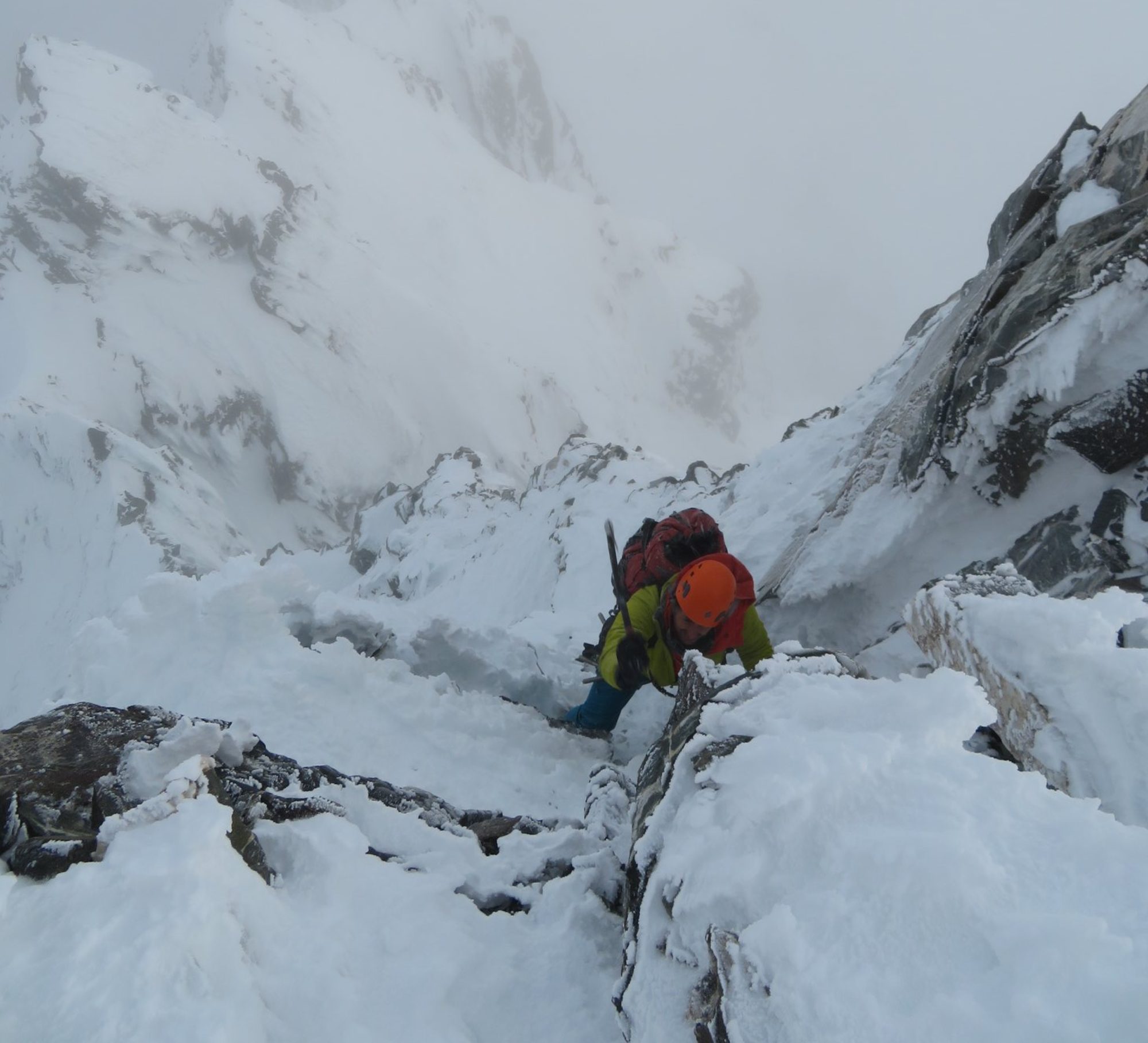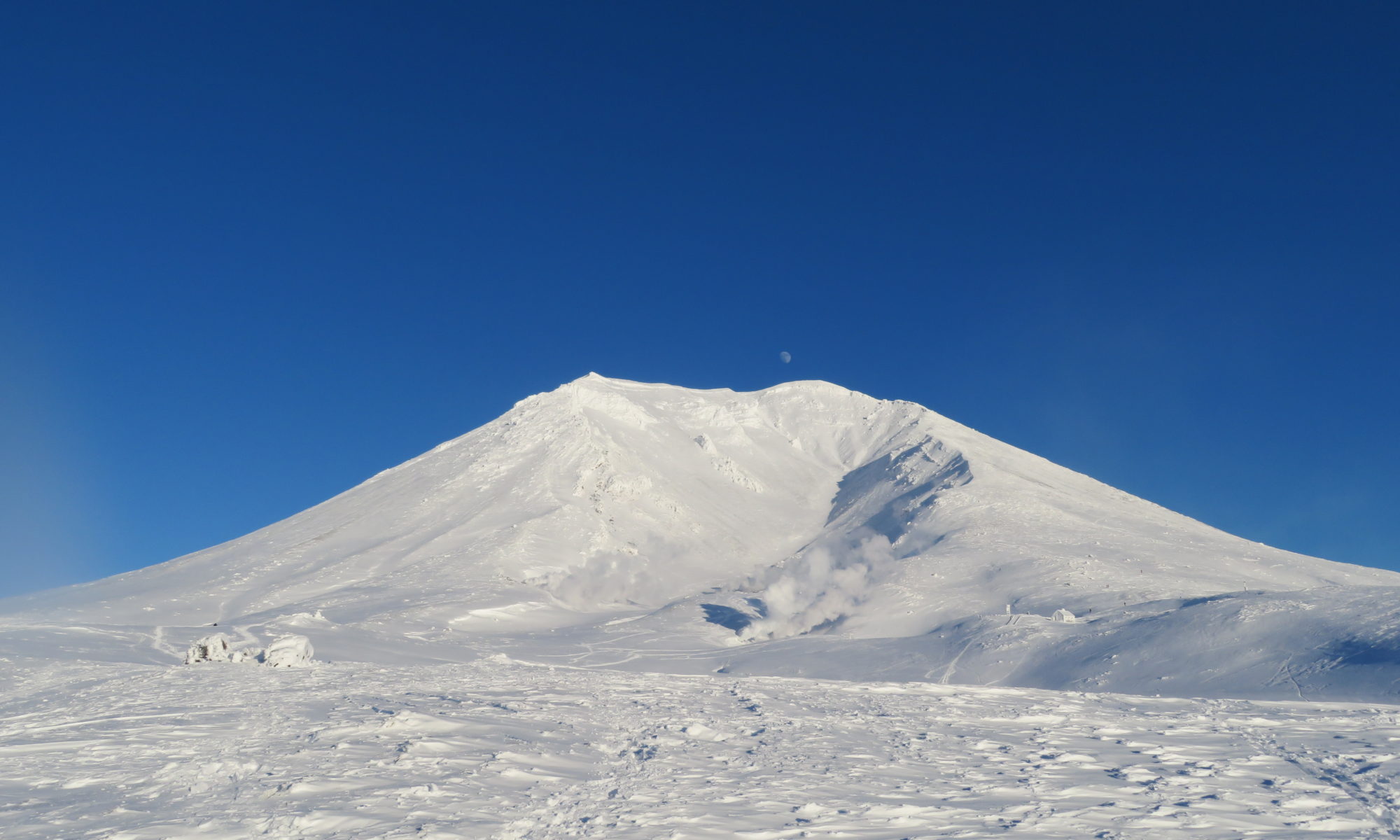In January 2020, I went skiing in various areas around Furano in Hokkaido, the northern island of Japan. I discovered a number of great backcountry and slack-country areas through the help of a local guiding company. These areas provided amazing skiing during the bluebird days where the snow was not falling but the visibility was clear. The three areas were: Asahi-dake, Tokachi-dake, and Nishi-dake (i.e. Furano slack-country).
Asahi-dake
Asahi-dake is the highest point on the island of Hokkaido, and is an active volcano which constantly emits steam and sulphurous odours from near the crater. A cable car does most of the hard work, so it lacks the true backcountry feel of an area only accessibly by ski-touring. Despite this and a relatively big crowd, we were able to get fresh lines in all day, by traversing and seeking out un-skied faces. The terrain was generally quite mellow but certain aspects had steeper chutes and drops. Snowboarders had to be aware that certain lines bottomed out with long, annoying traverses which were much easier for skiers.
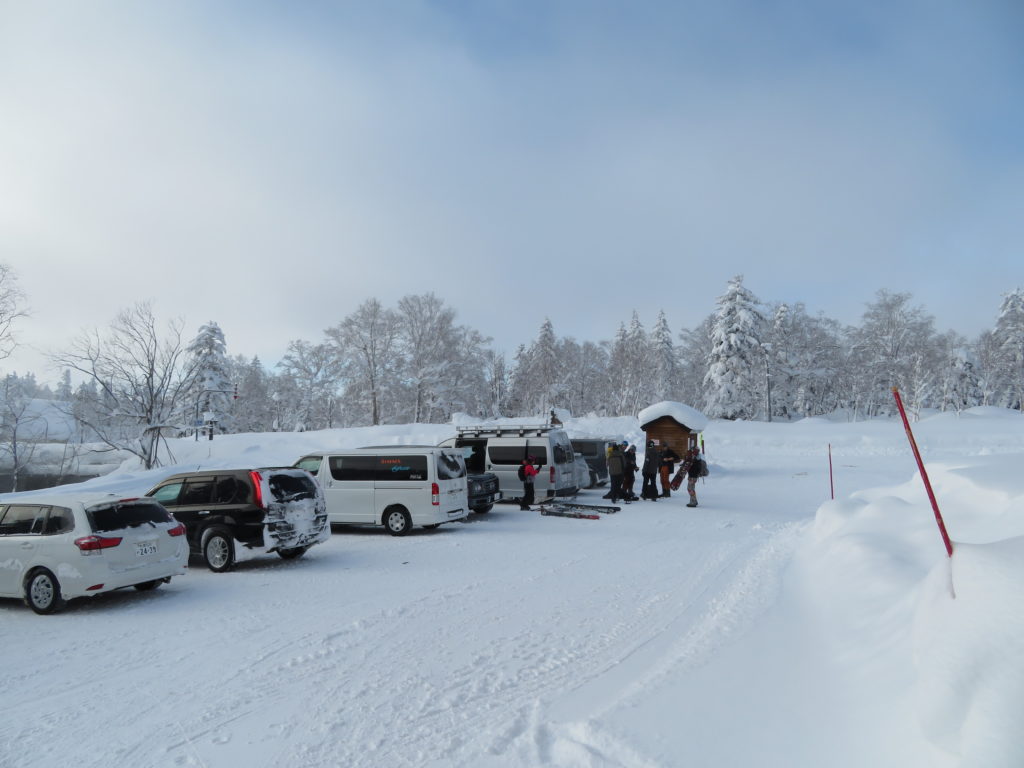
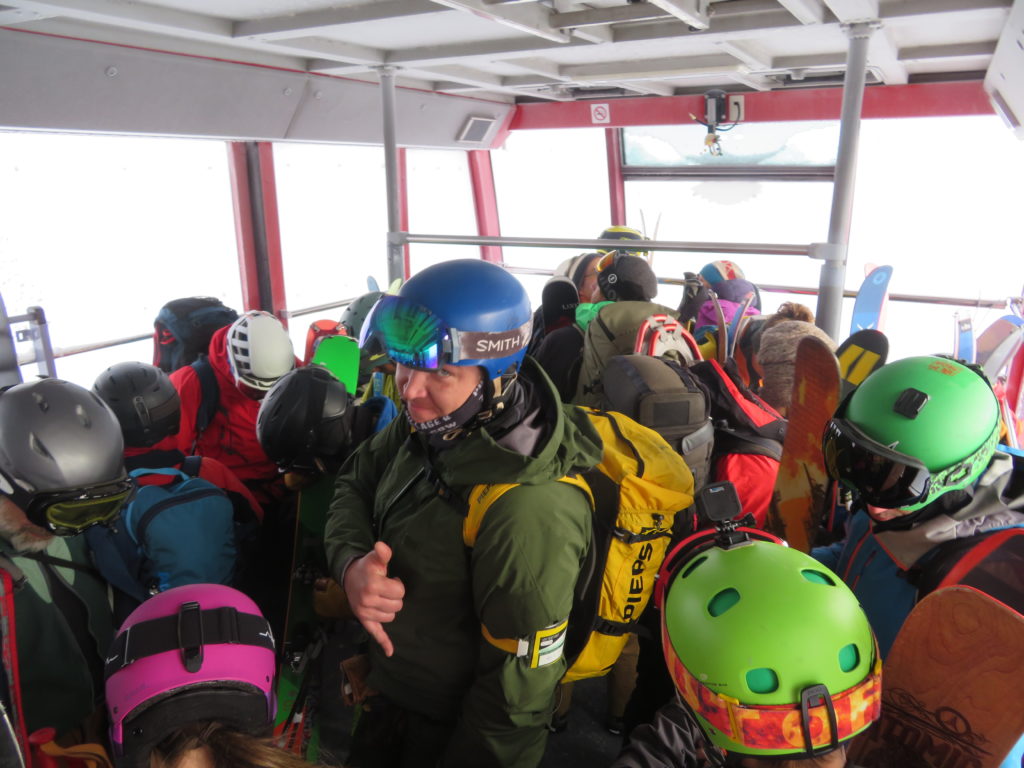
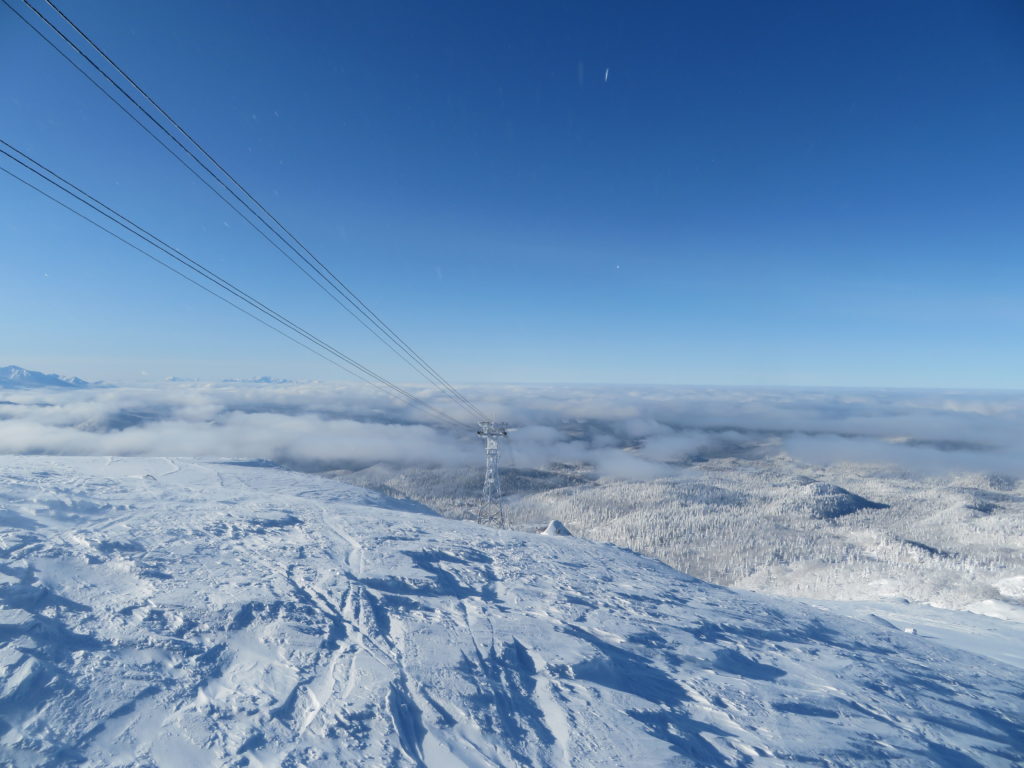
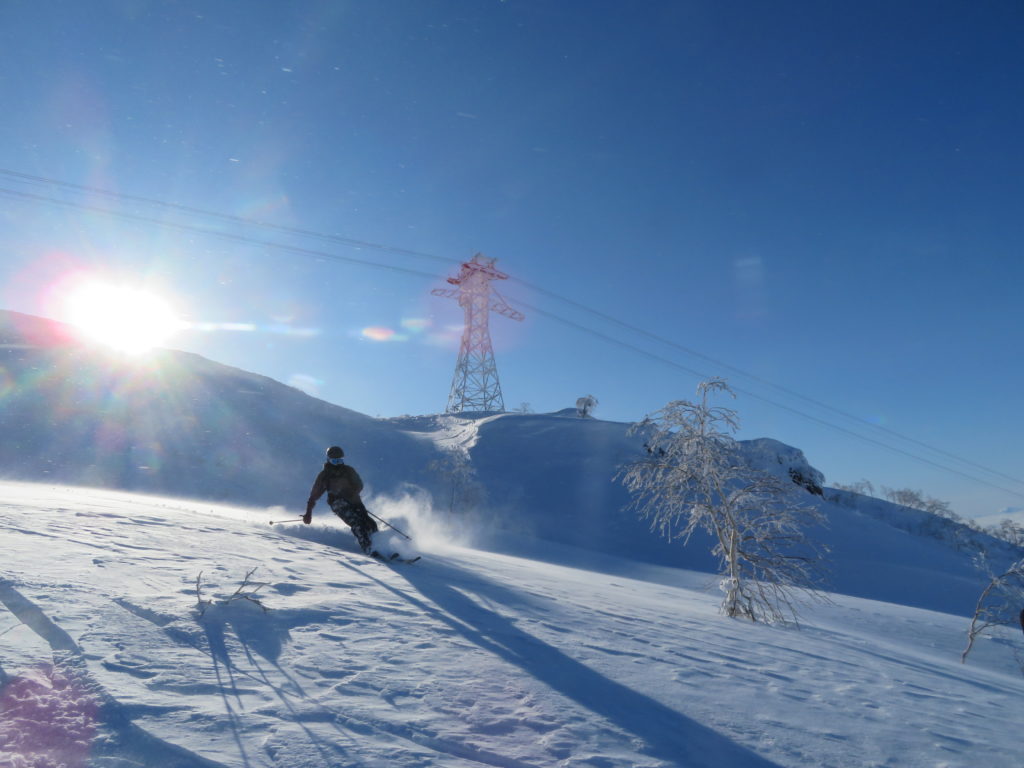
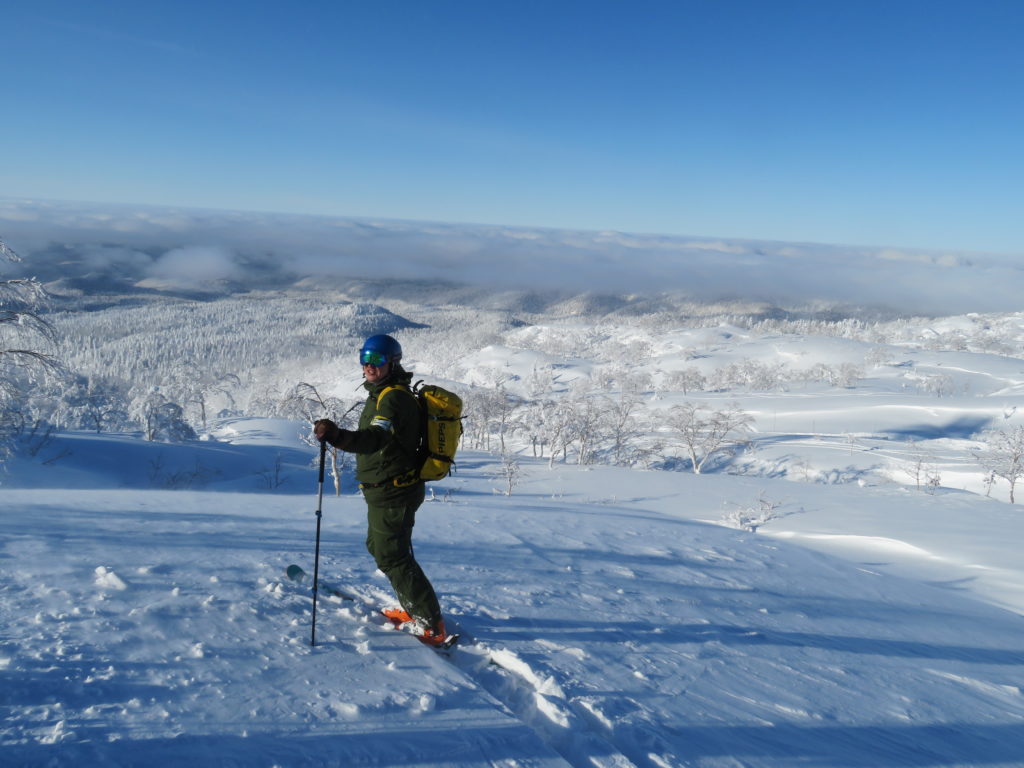
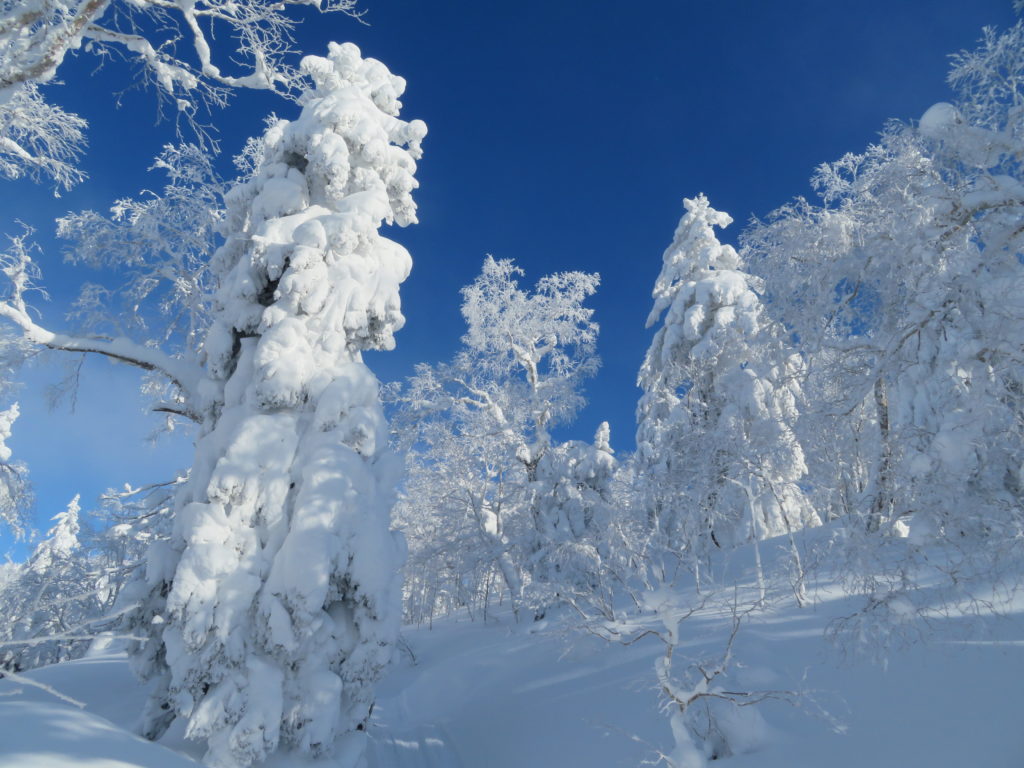
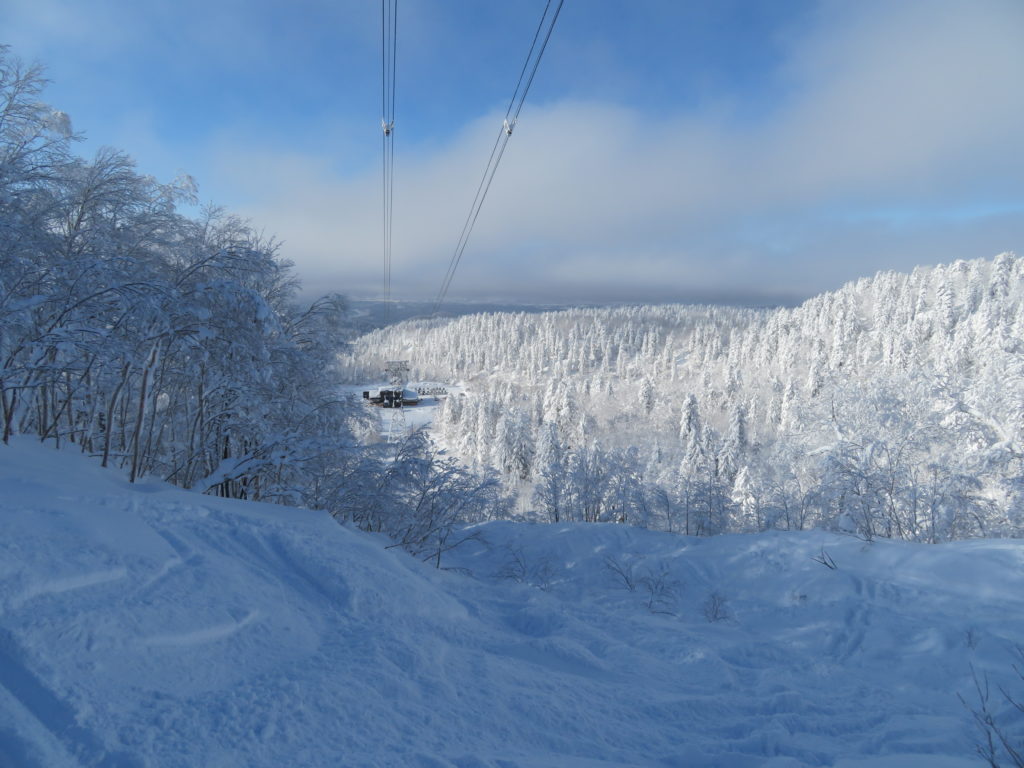
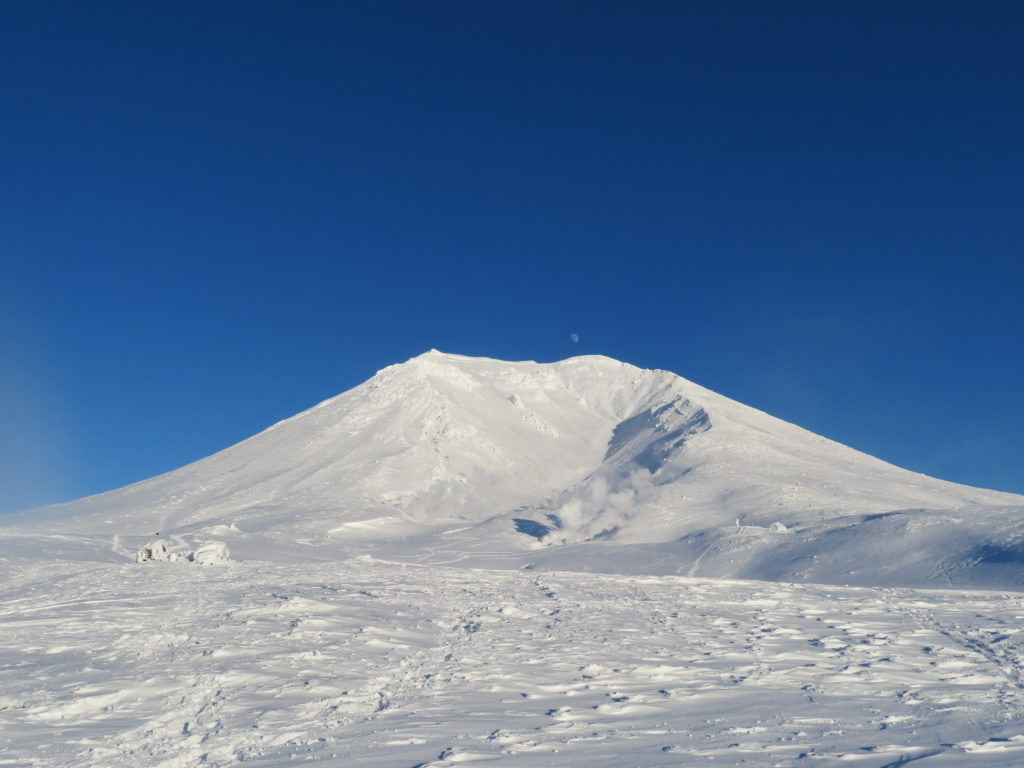
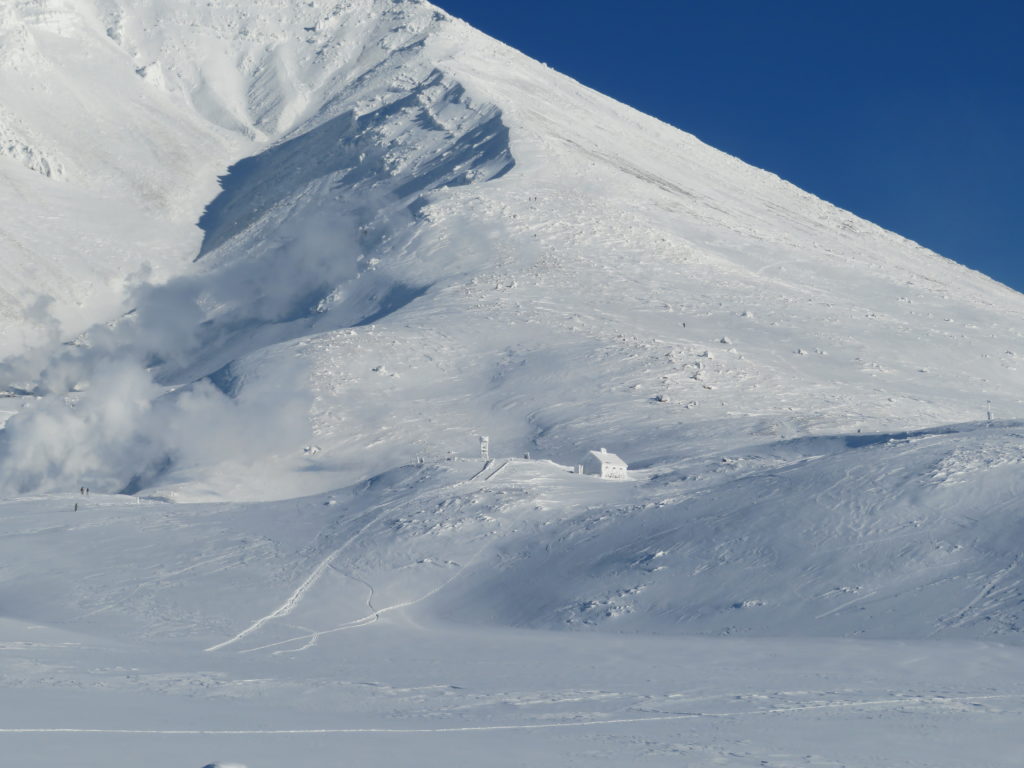
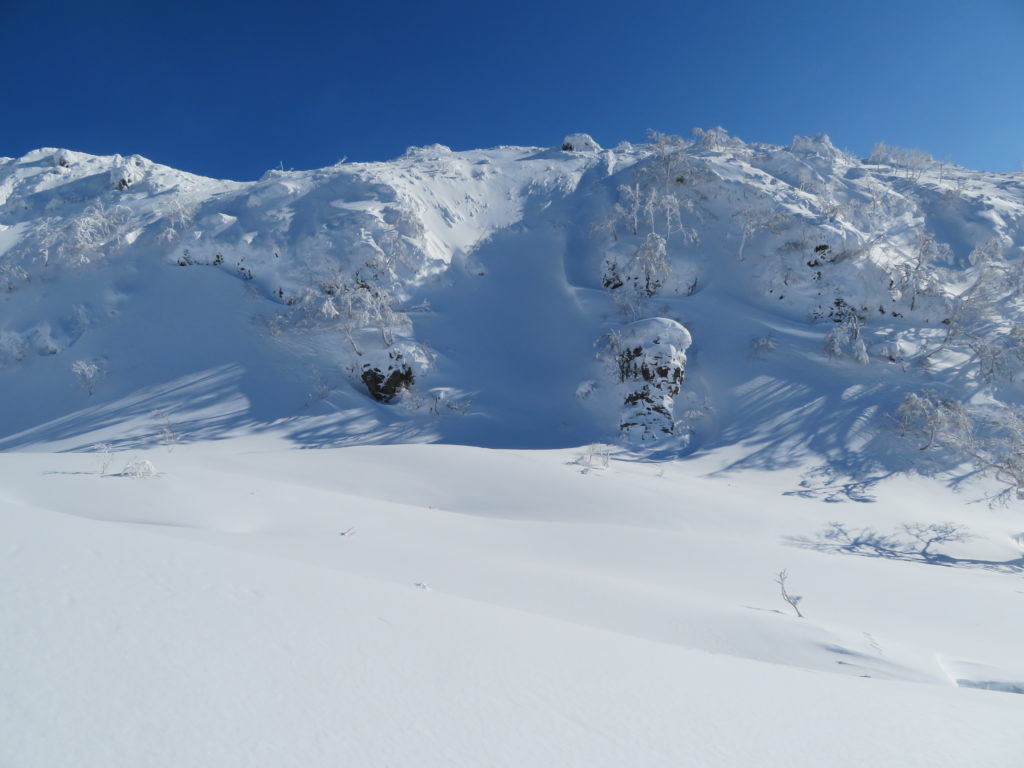
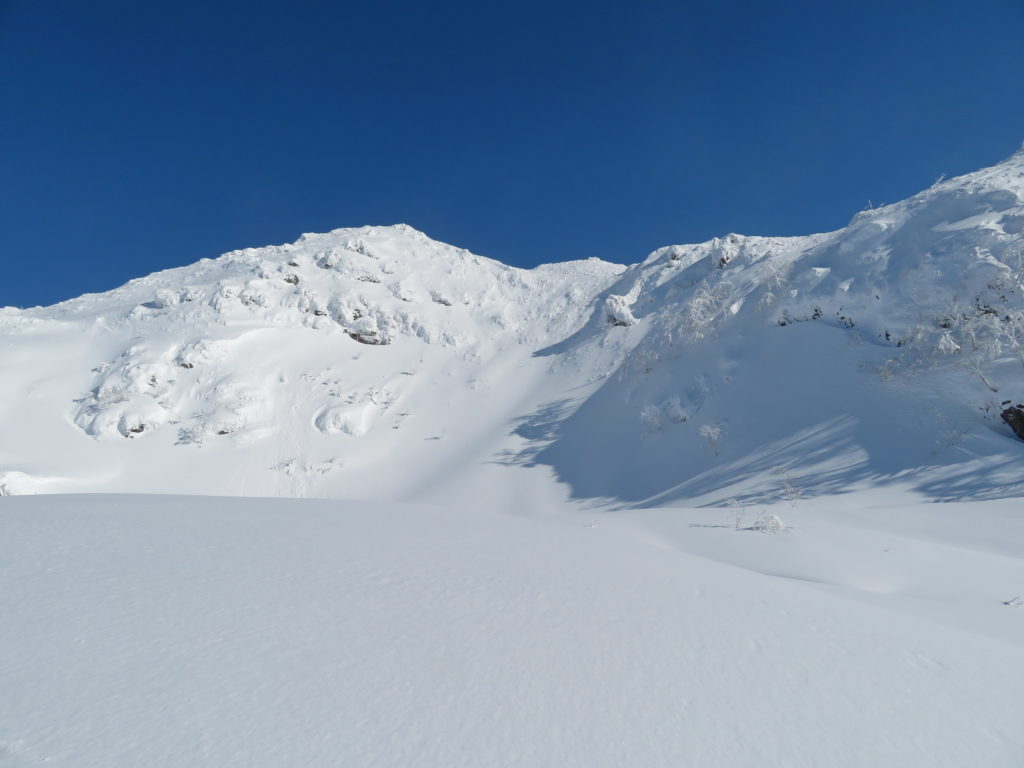
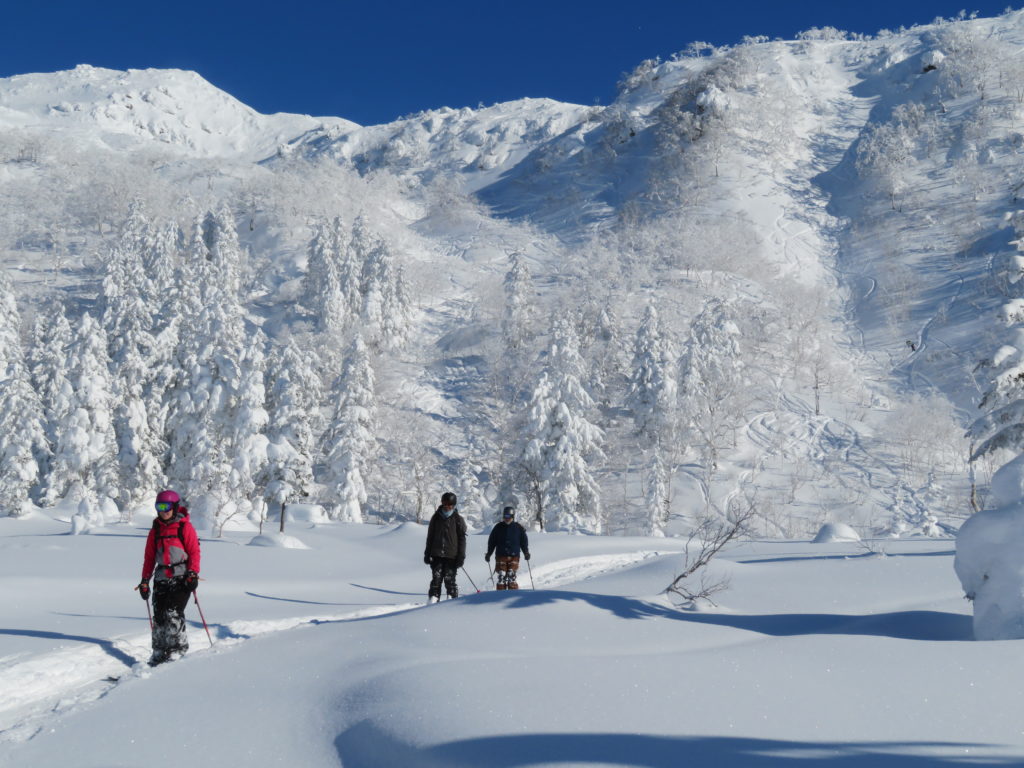
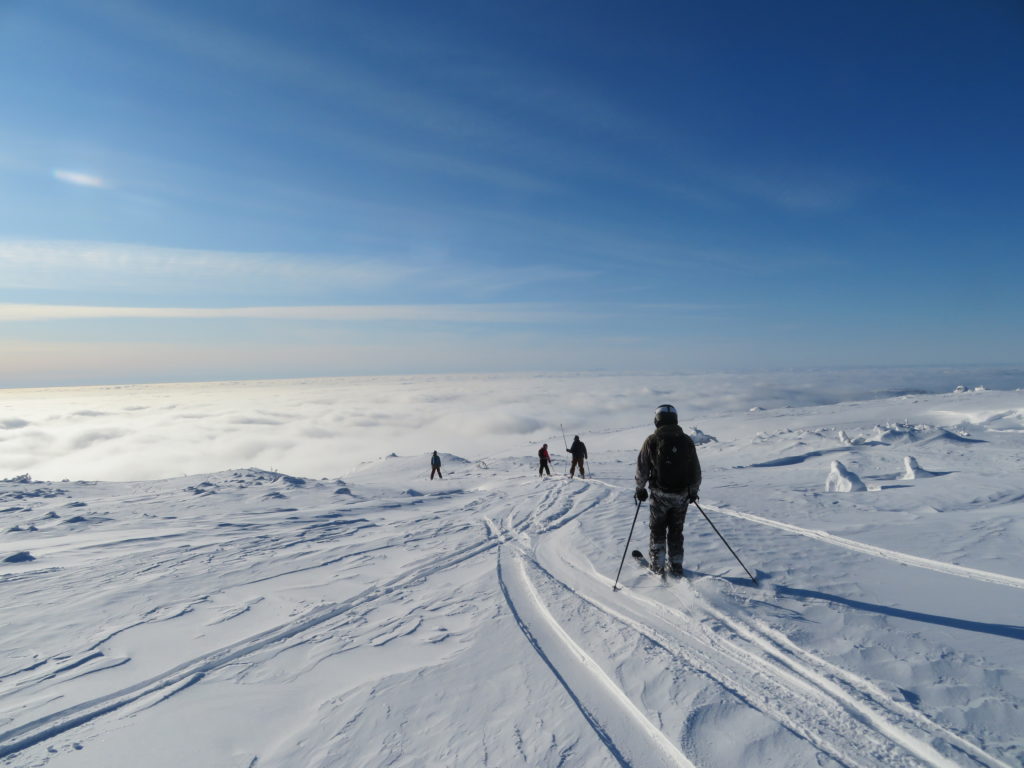
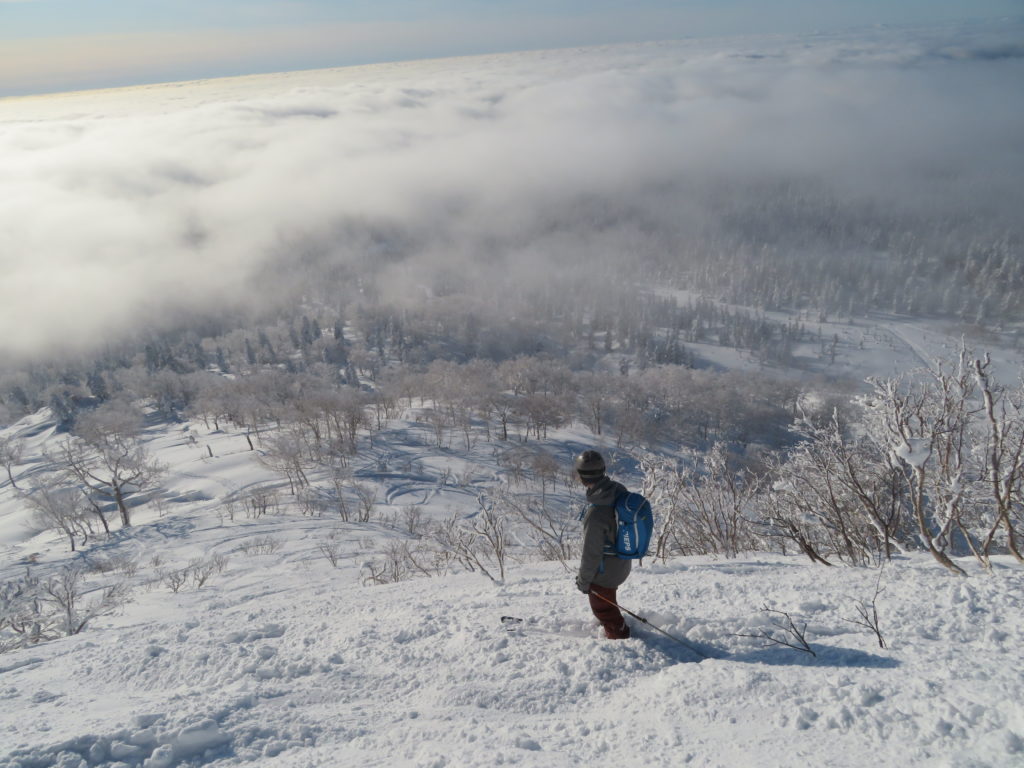
Tokachi-dake
Tokachi-dake is a short 45 minute drive from Furano, and has many hot springs and onsens which make for a great relaxing stop after a day of hard ski touring. We actually ascended and skied on Furano-dake, which is adjacent Tokachi-dake but has more protected aspects and less wind-affected snow. Unlike Asahi-dake, this area is for ski-touring only. No lifts to help you up the hill meant it tracked out much more slowly. Overall a beautiful day of again stunning calm, high visibility conditions, which yielded the best lines of my two weeks in Japan this year. We did four runs with a total of ~800m of vertical ascent/descent on our touring skis.
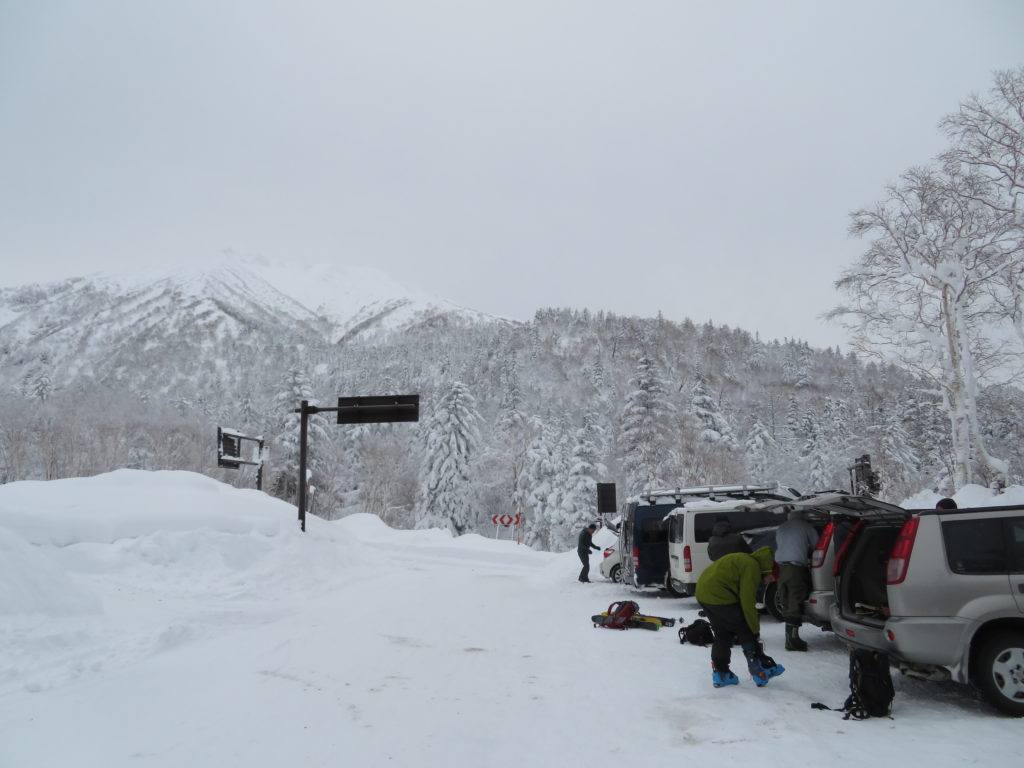
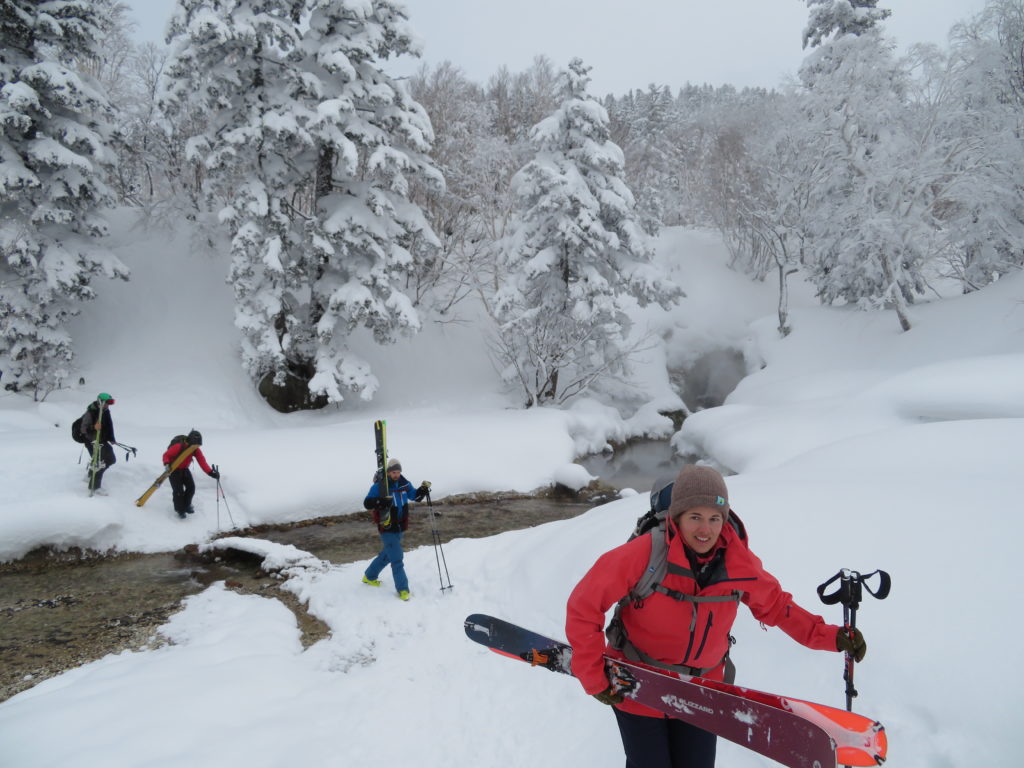
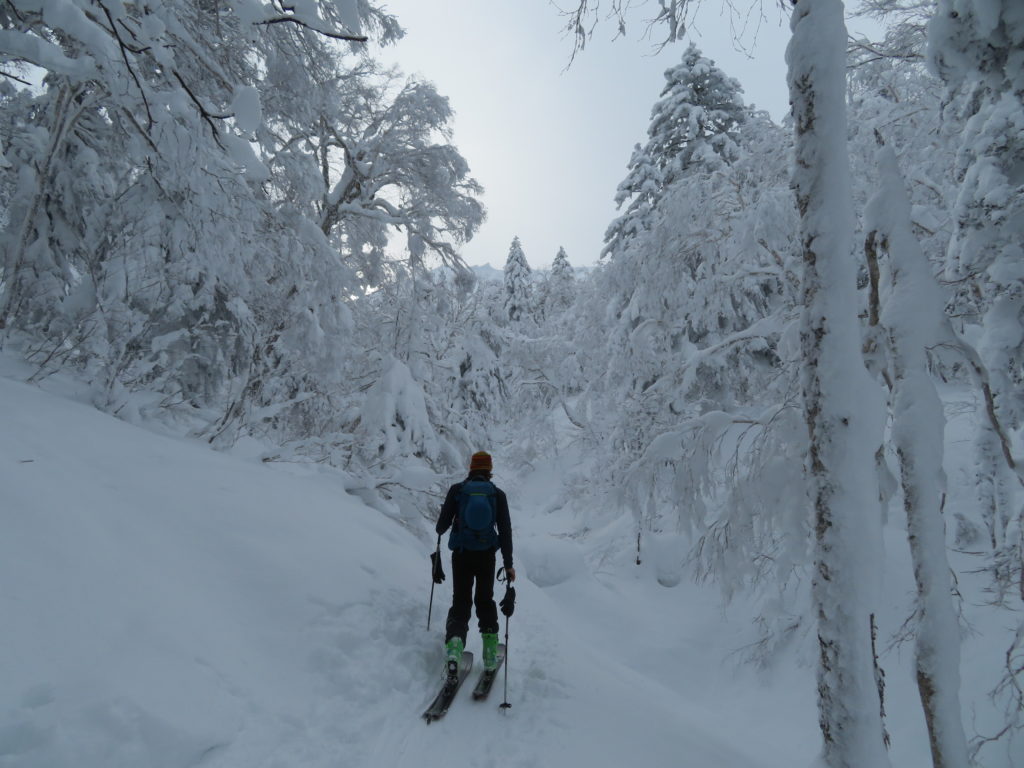
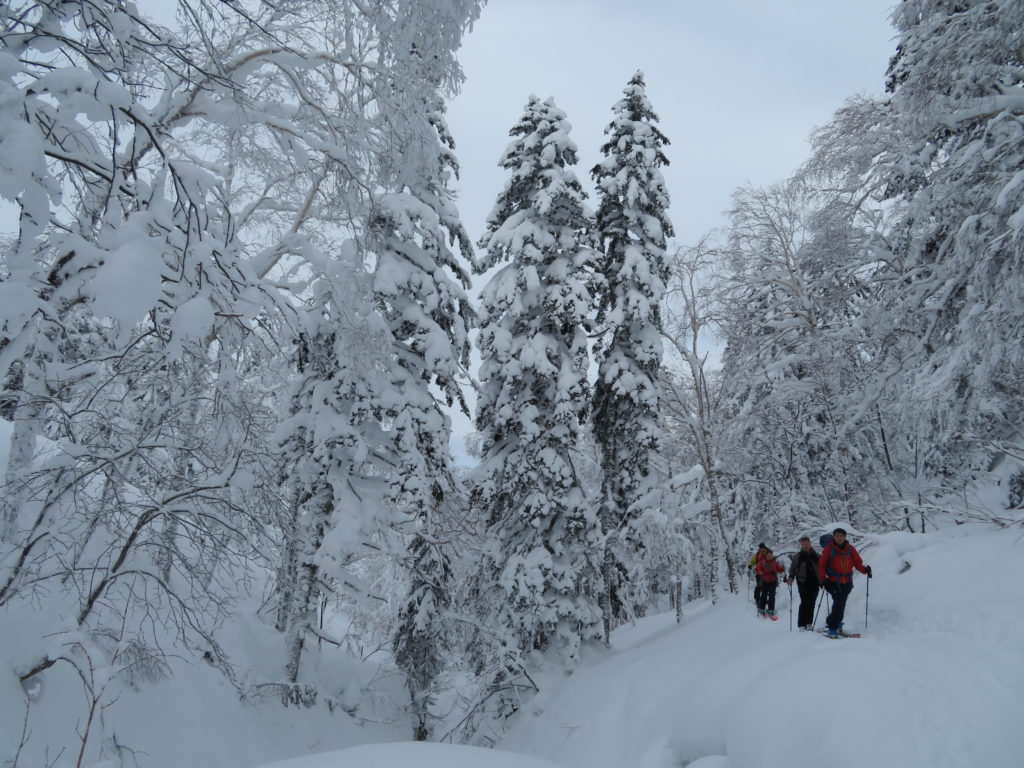
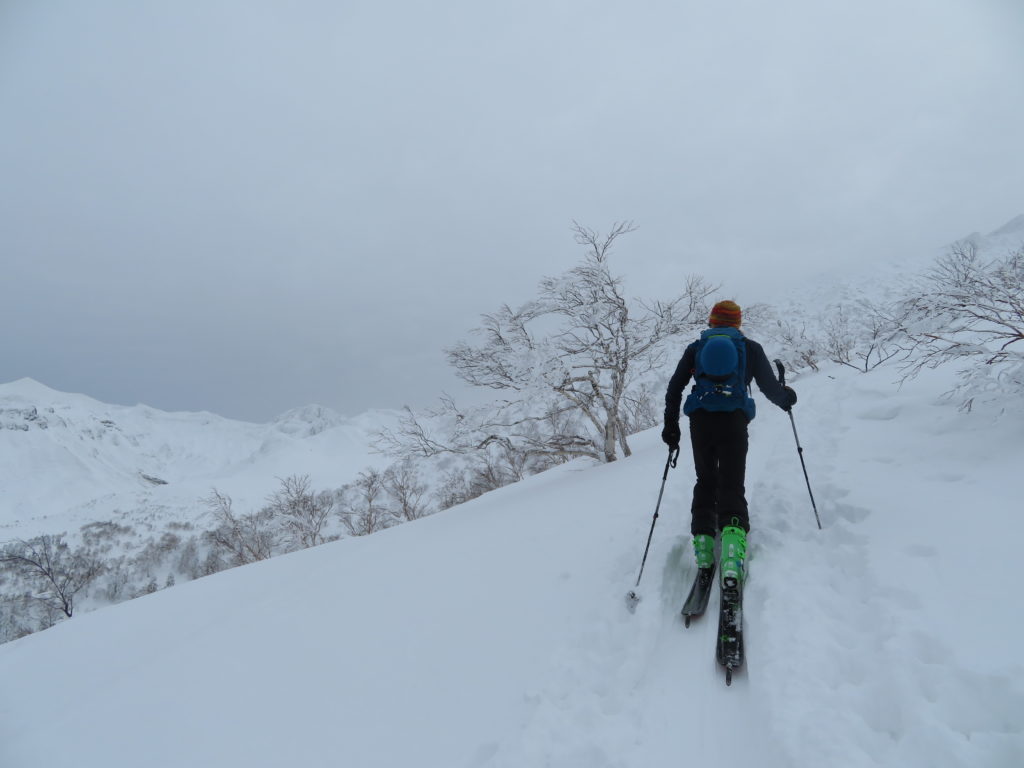
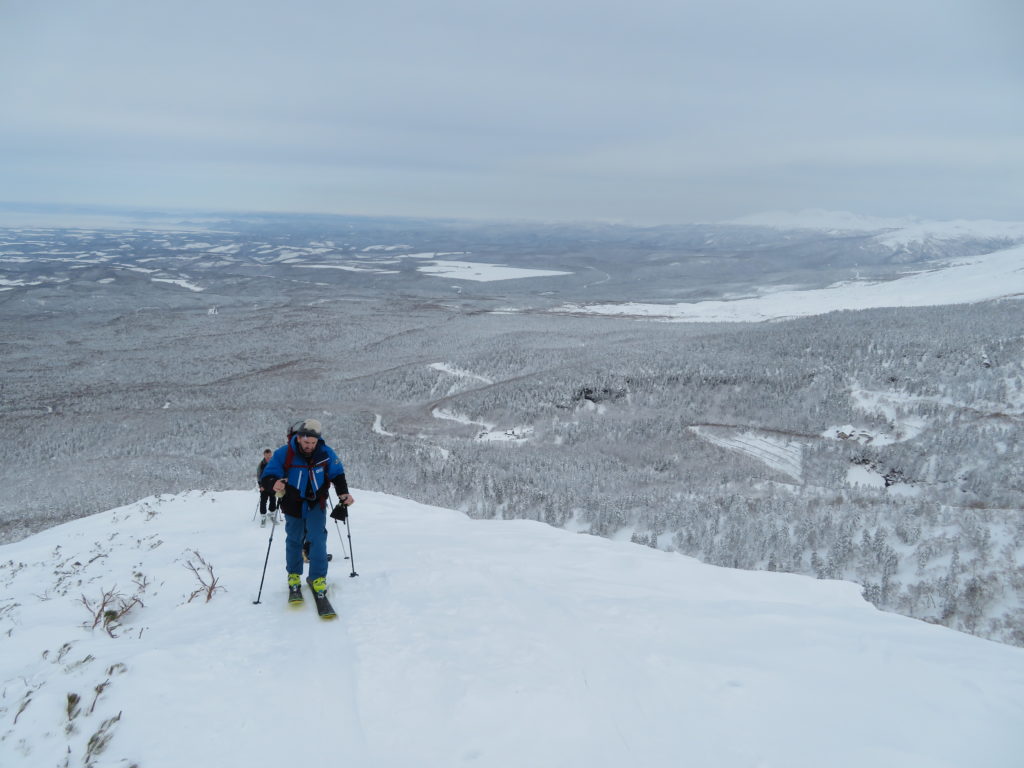
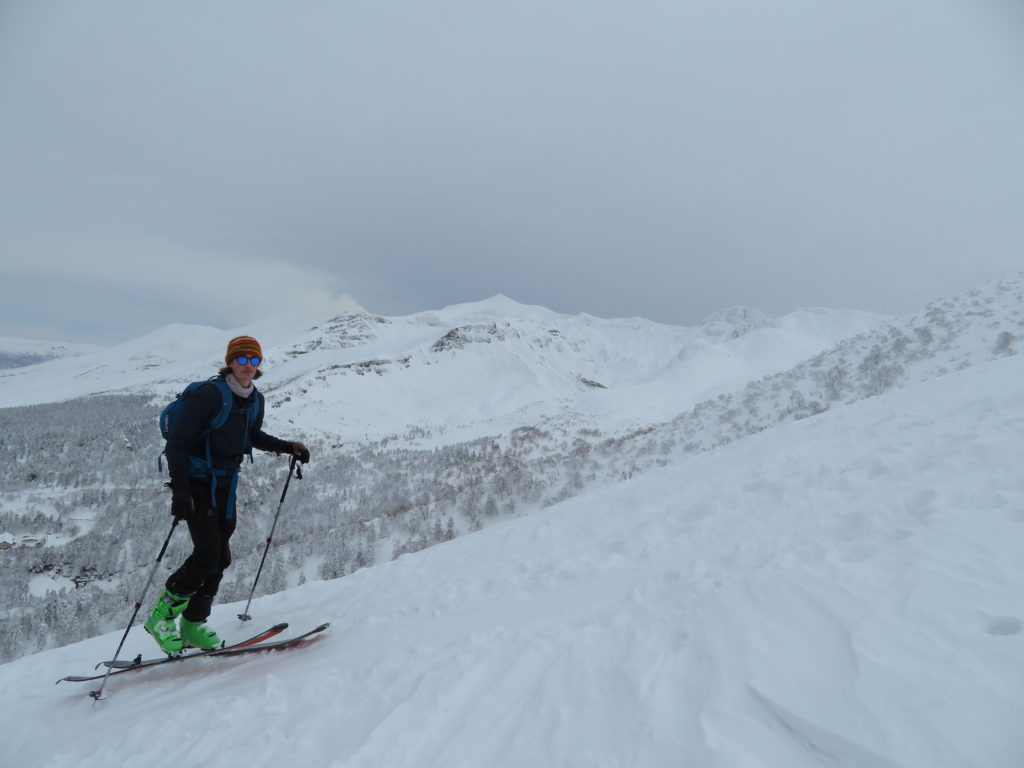
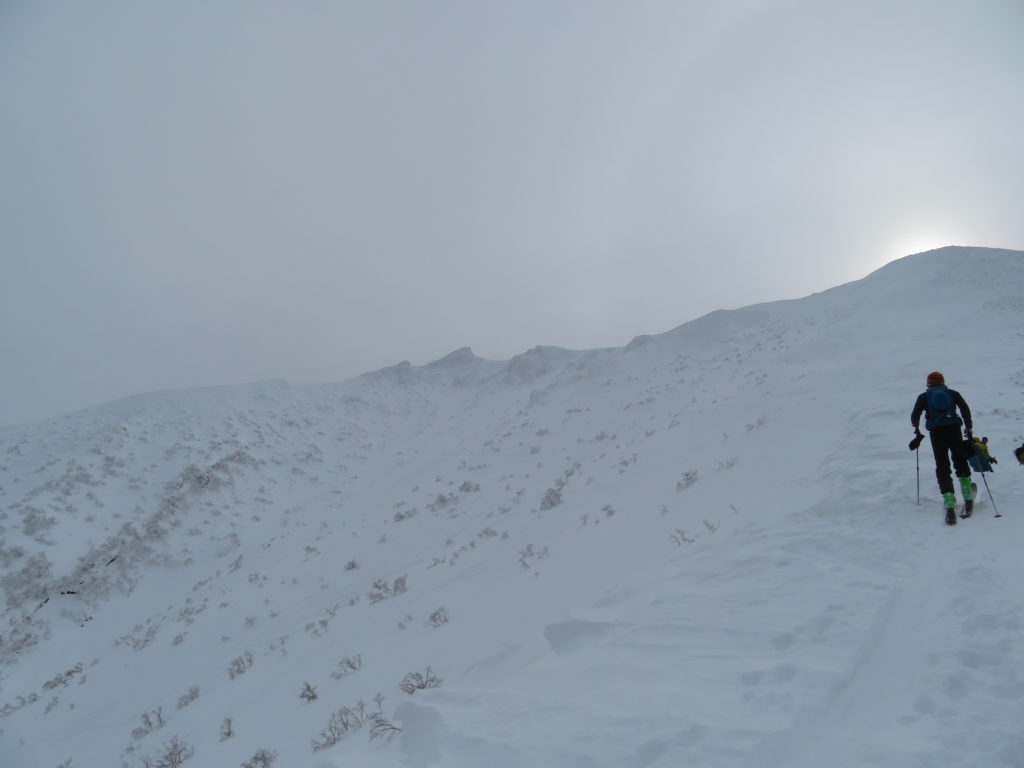
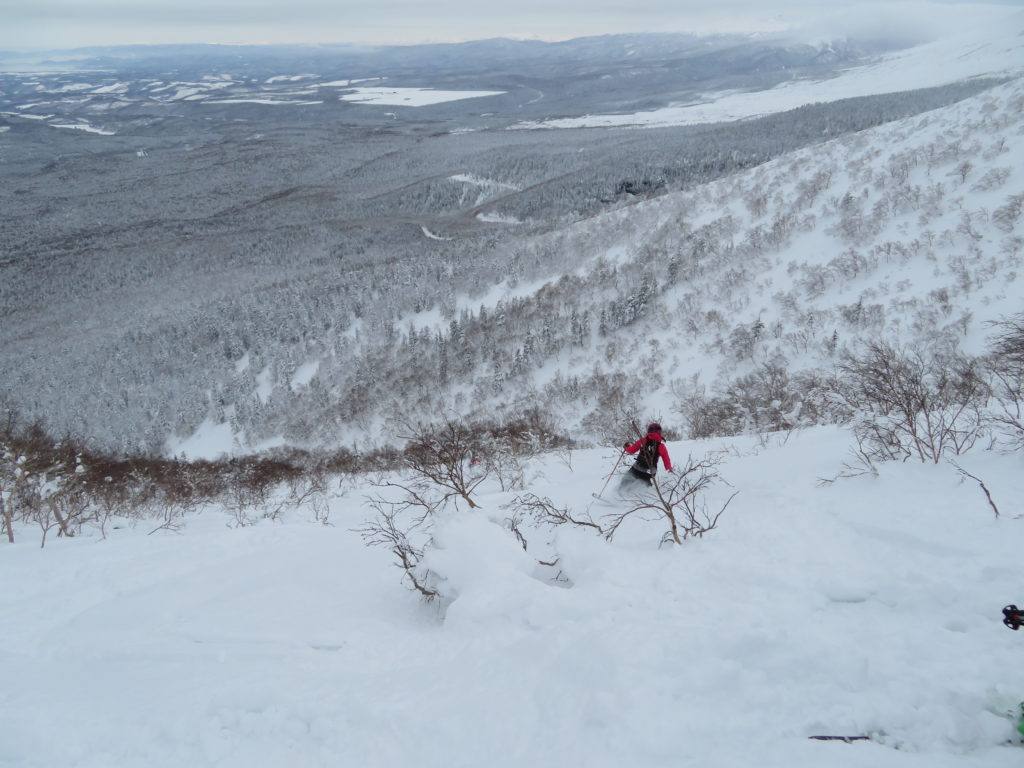
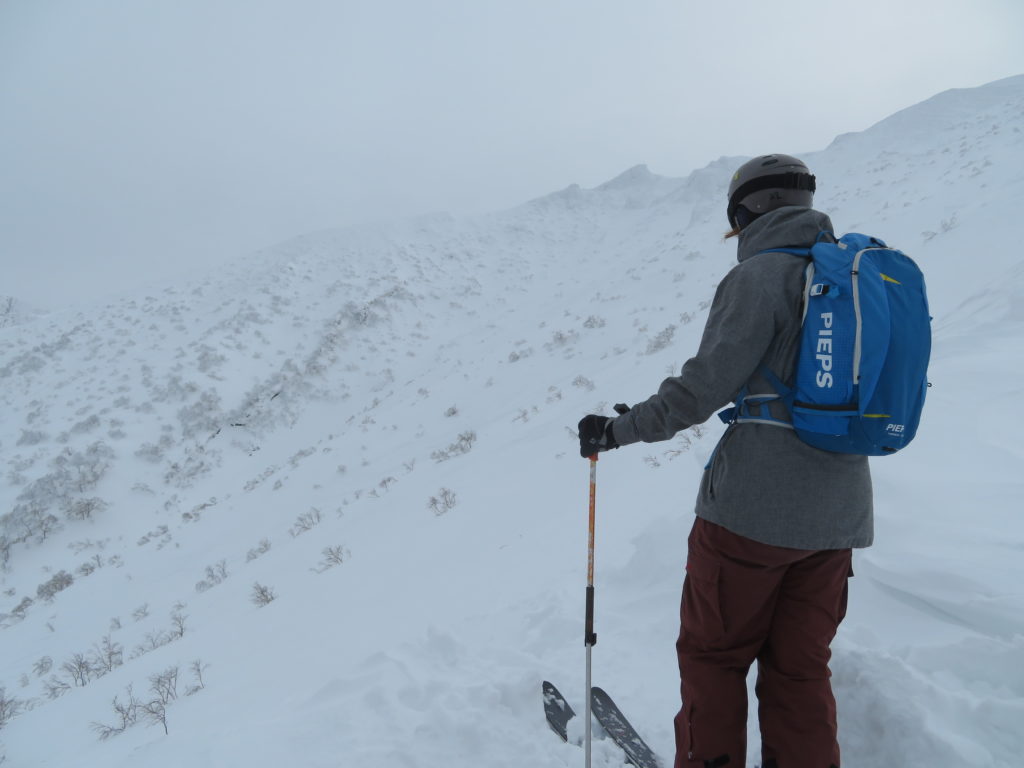
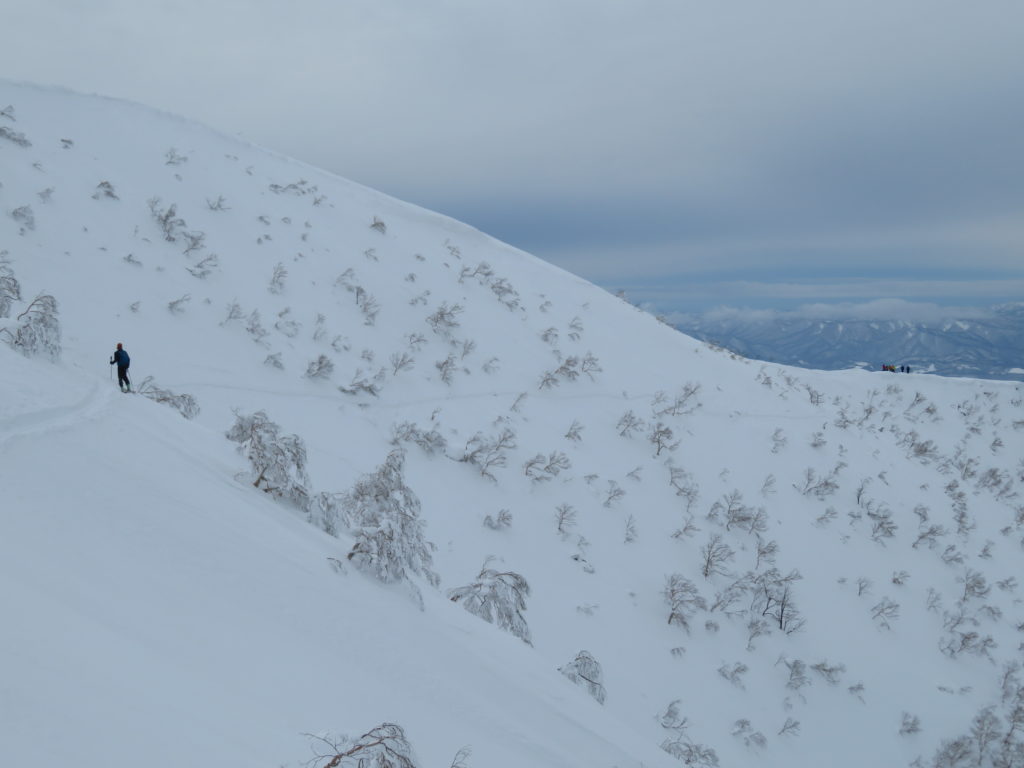
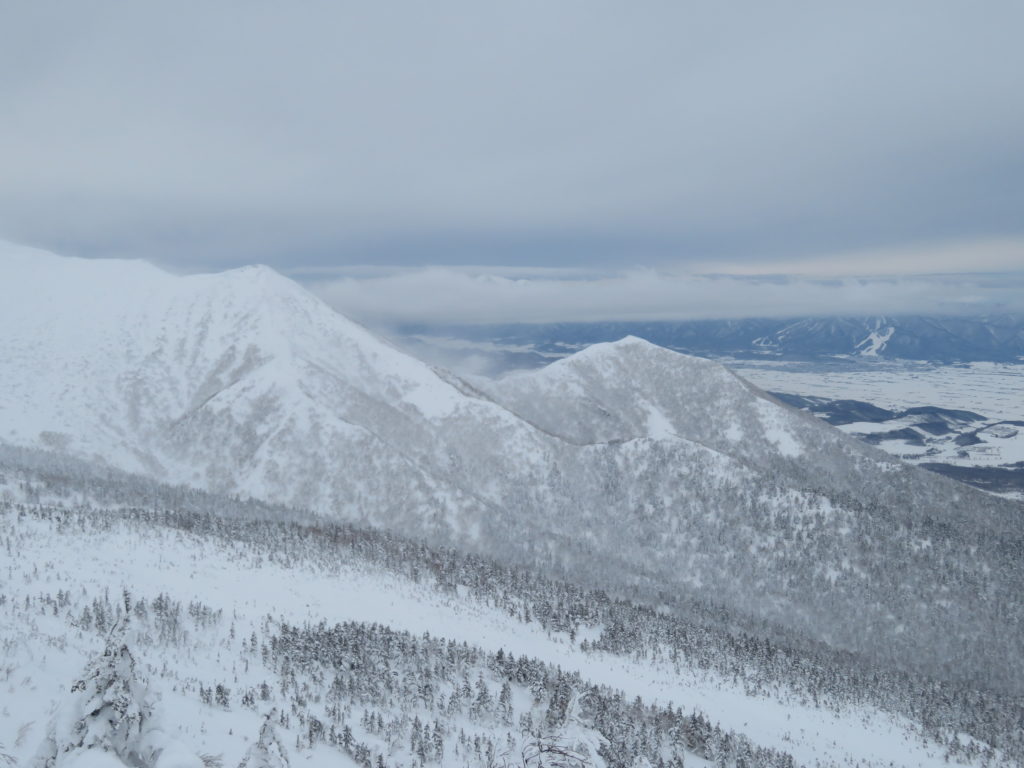
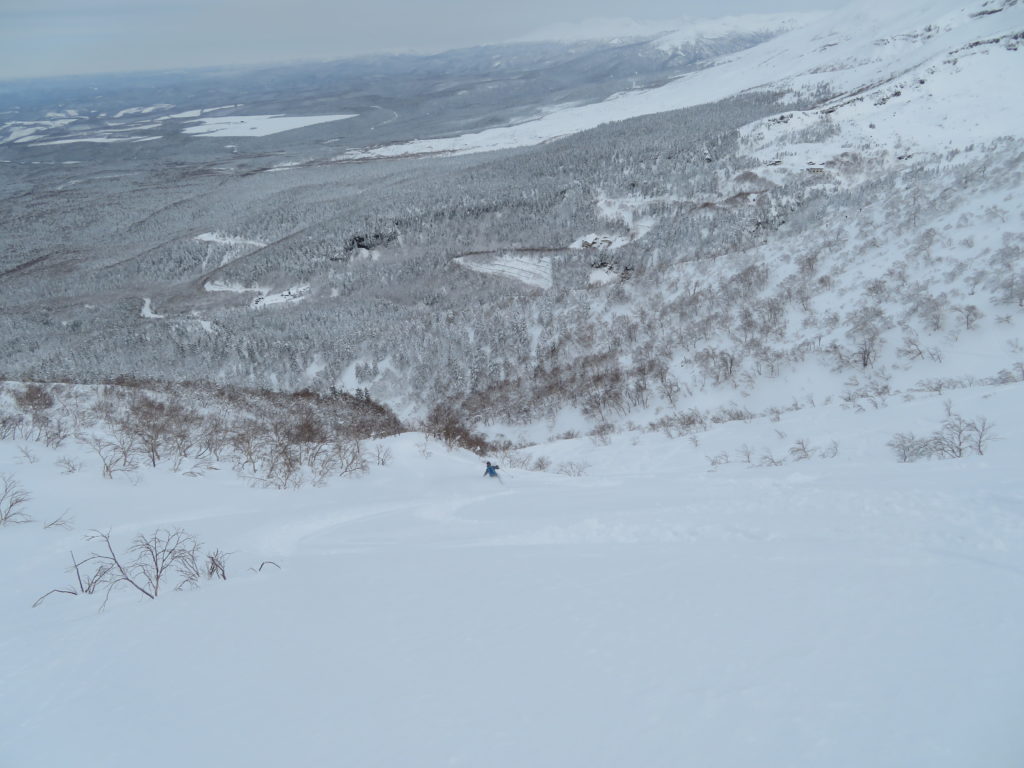
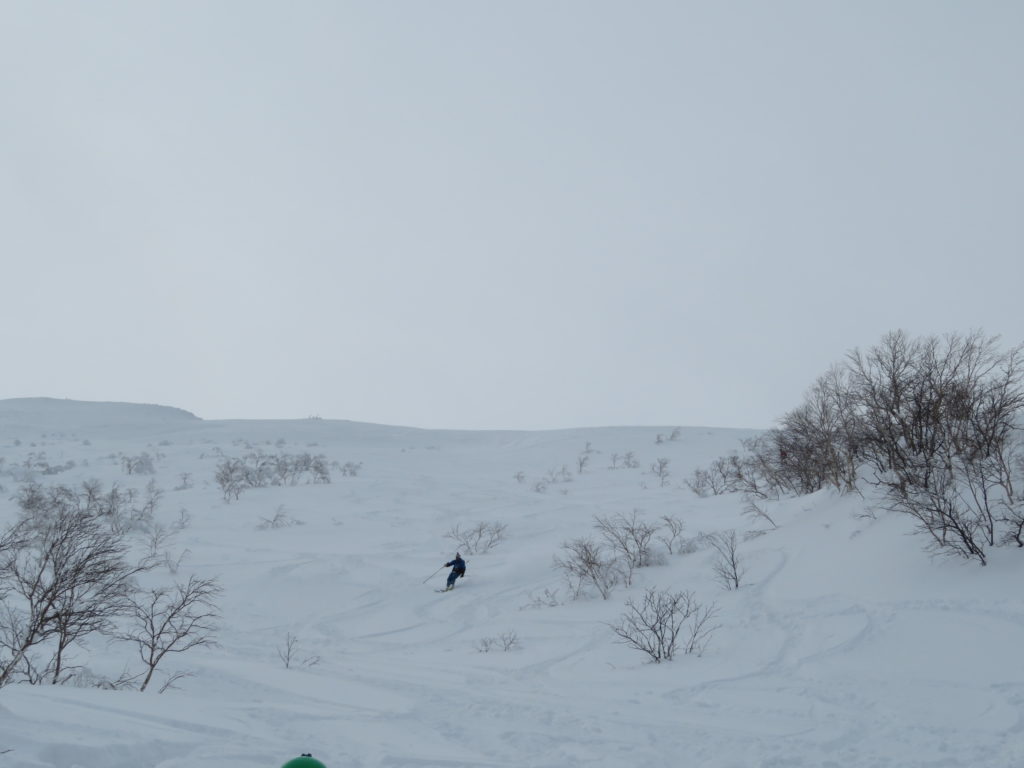
Nishi-dake
Another stunning bluebird day, but by now the lack of fresh snow was beginning to make the skiing a little more chatter-chatter. This area was accessible through a single ride from the gondola and highest chairlift at Furano ski resort, from which you could duck under the rope marking the resort boundary and be in silent backcountry. Unfortunately a slow start to the season’s snowfall meant there was quite a lot of shrubbery still exposed within the trees which made the downhill descents more tricky than I would have liked. But it was still a quality day with lots of vertical meters covered on skis and a few descent turns earned. The crystal-clear visibility made for stunning views of the mountains we had skied on preceding days.

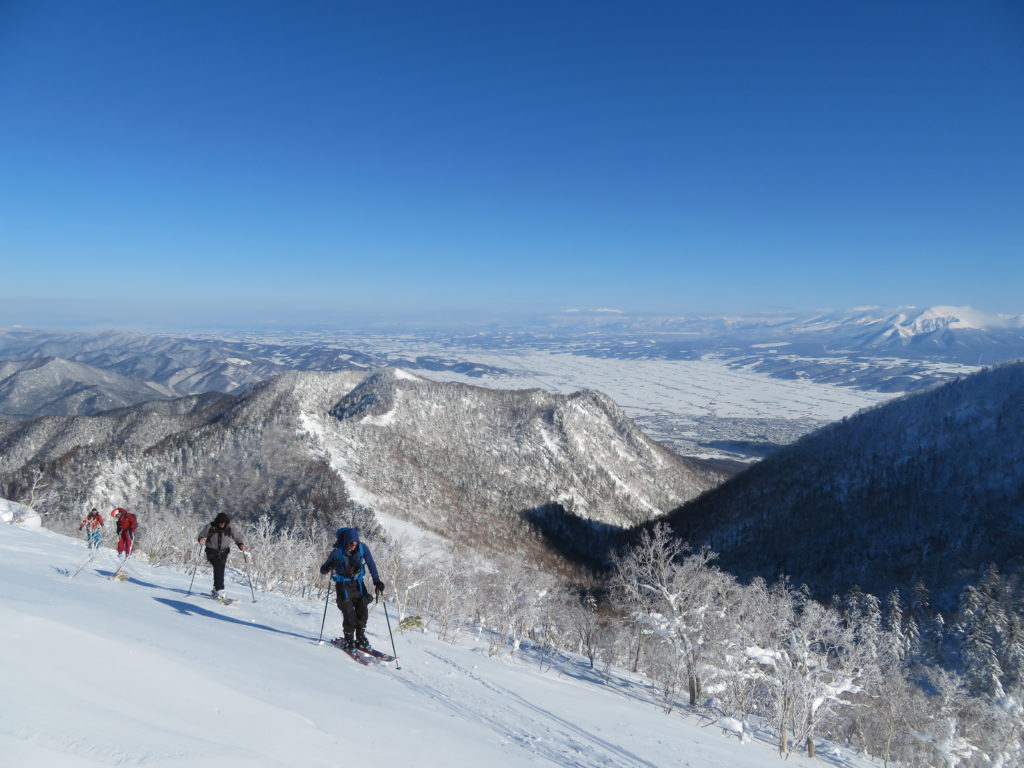
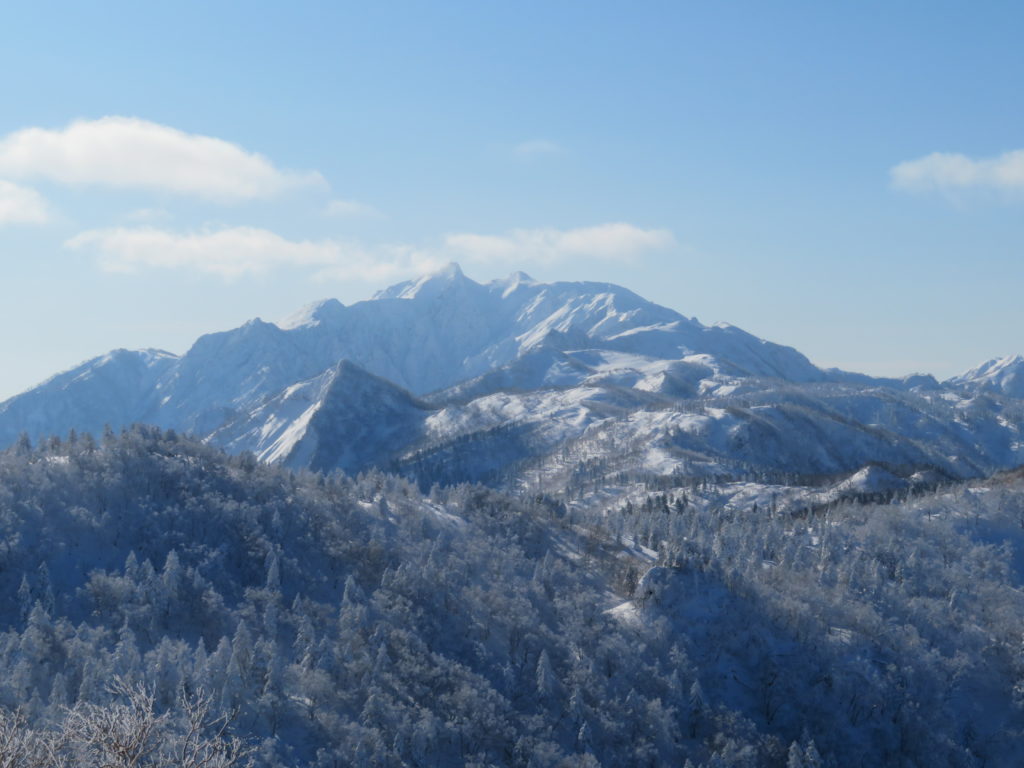
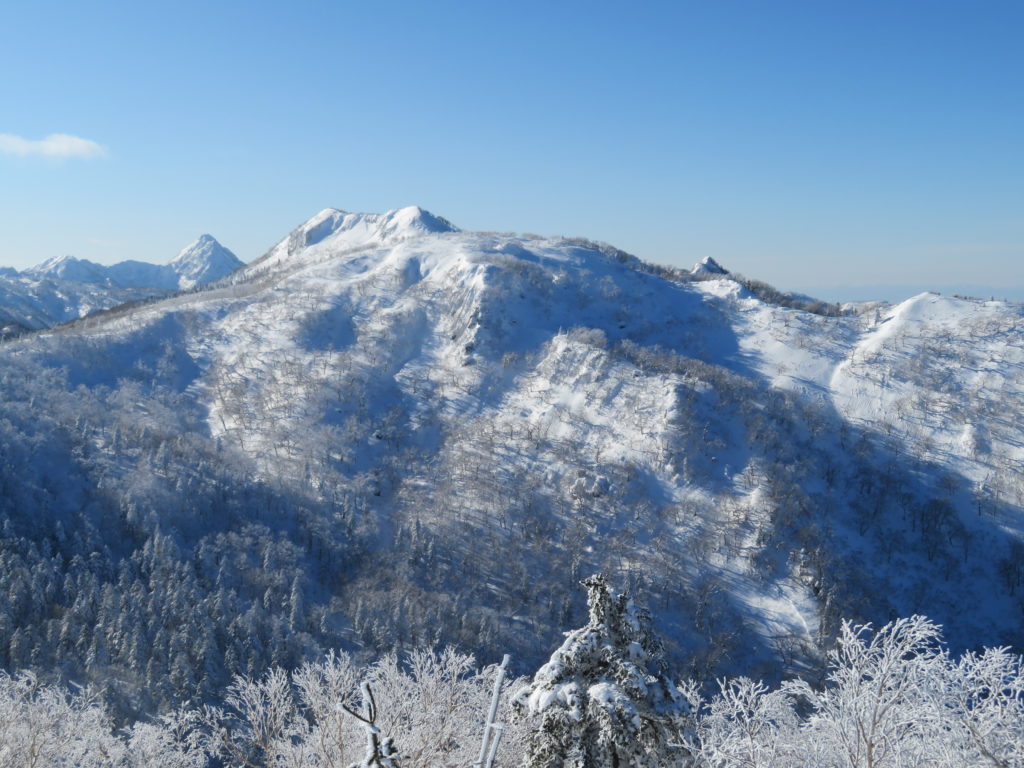
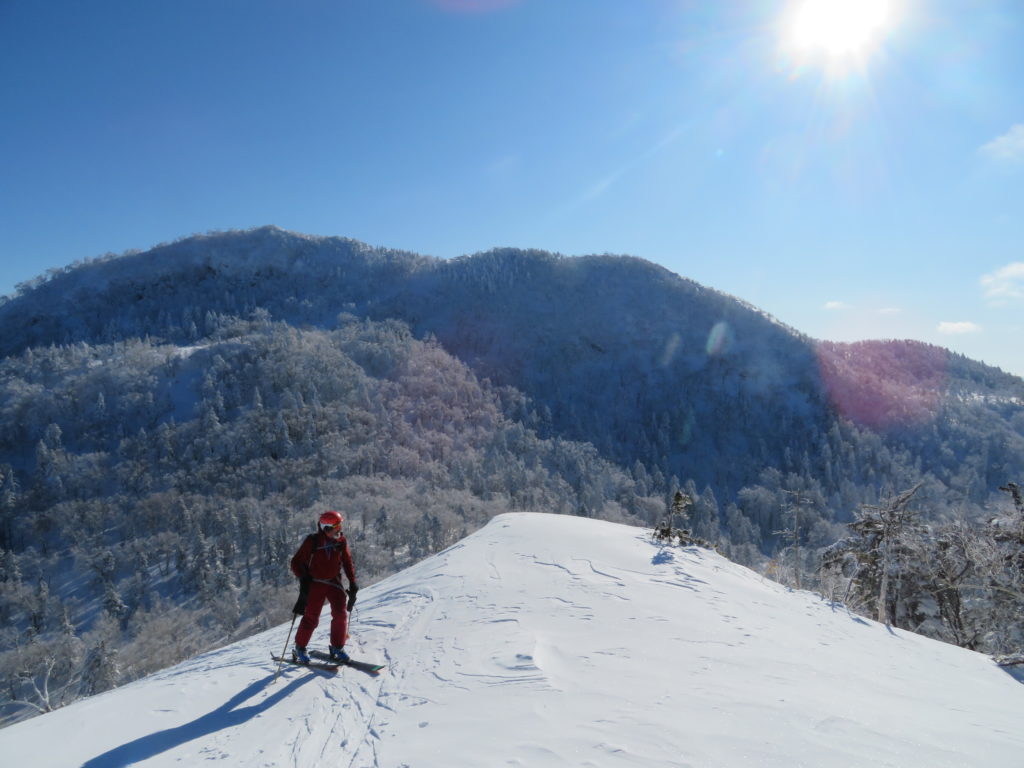
The skiing on Hokkaido is generally quite mellow and cruisy, which is good, because this means that going backcountry is less likely to require exposing yourself to dangerous avalanche conditions. When the snow was fresh and falling continuously, I tended to stay within the resort boundaries just to get as many face-shot laps in as possible. But when the conditions cleared up, having a pair of touring skis and backcountry setup proved extremely useful. These backcountry outings were easily the most enjoyable days of my trip, with the peacefulness of the forests providing a nice contrast to the J-Pop blasting, often-crowded resort scene. There is still a lot of unexplored potential in other nearby areas which I’d like to return to explore further.
